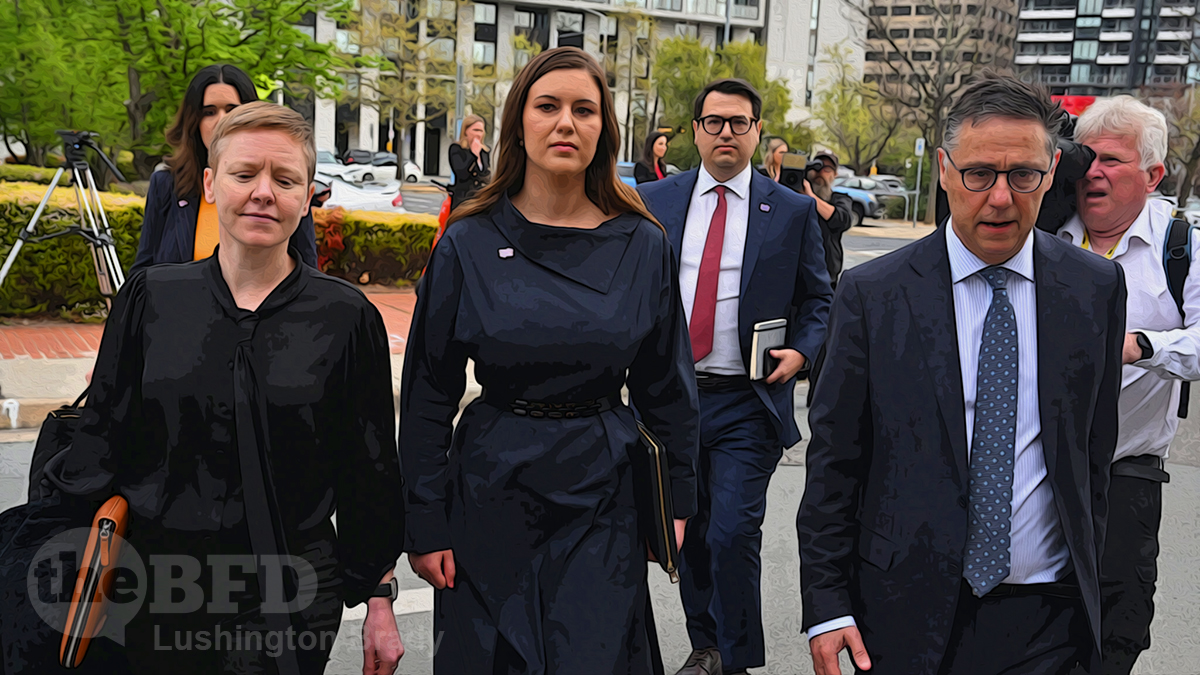In his initial testimony to the Sofronoff inquiry, the Canberra chief prosecutor alleged that there was a “conspiracy” of interference in the Britanny Higgins rape claims. Shane Drumgold quickly walked back his claim under scrutiny, but the suspicion that there was indeed an extraordinary level of inappropriate interference in the police investigation is being more and more confirmed, each day of the inquiry.
The only problem for the ACT DPP — and almost everyone else involved on Higgins’ “side” — is that the evidence is all pointing that the interference came from the opposite direction to that Drumgold claimed.
The police officer in charge of the investigation into Brittany Higgins’s rape allegations has revealed the immense pressure investigators were under to charge Bruce Lehrmann, culminating in a direct phone call from her boyfriend, David Sharaz, to a senior detective threatening to publicly condemn the time being taken.
Detective Superintendent Scott Moller gave evidence to the Sofronoff inquiry on Monday that within an hour of Mr Sharaz calling Detective Inspector Marcus Boorman, he was given instructions to serve a summons on Mr Lehrmann for one count of sexual intercourse without consent.
On the face of it, the boyfriend of an accuser having the apparent clout to pressure Federal Police is extraordinary enough. But Mr Sharaz has an interesting background. A former press gallery journalist and public servant, Sharaz was revealed to be a long-time acquaintance of Labor senator Katy Gallagher. Unedited audio of Higgins’ interview on The Project features Sharaz boasting that Gallagher would keep the story going in Parliament. Gallagher also indicated to others that she had been “communicating with” Sharaz and was in regular communication with Higgins. Higgins also admitted that Sharaz leaked documents relating to the case to journalists.
And he apparently had the influence to force police’s hands and instigate them to lay charges none of them thought passed the evidentiary threshold.
Detectives were under so much pressure to progress the case against their professional beliefs that many went on stress leave, Superintendent Moller said.
He confirmed that as The Australian reported last year, police did not believe there was enough evidence to charge Mr Lehrmann but agreed to do so after receiving advice from ACT Director of Public Prosecutions Shane Drumgold.
One of the few people to emerge with any integrity from the Sofronoff inquiry so far is Superintendent Moller.
Superintendent Moller said his investigators did not believe they had met the evidentiary threshold to charge Mr Lehrmann so he signed the summons himself.
“I swore the summons because I did not want to put any of my staff in the position where they had to do something they didn’t want to do, didn’t believe in, so I did it,” he said.
The AFP was also put under pressure to allow unethical conduct in the case.
Superintendent Moller also revealed Ms Higgins was allowed to watch CCTV footage of herself and Mr Lehrmann at Parliament House because she was “so keen to see it” – even though it could have corrupted her evidence – as police felt obliged under their “victim-centric” approach to show it to her.
Superintendent Moller said Ms Higgins “continually asked” to see the footage, which showed the pair exiting and entering Parliament House on the night Ms Higgins claims Mr Lehrmann raped her on a sofa in senator Linda Reynolds’s office.
“In a normal investigation, we would never show somebody evidence like that because it might influence their evidence later in court,” he said.
But the Sofronoff inquiry is exposing, not just the sordid world of the Canberra bubble, but the corrosive effect of “victim-centric” policing on the administration of justice.
“Wearing our investigators’ hats, we go: ‘No, we should not show that evidence because it might taint it later on down the track’. But under a victim-centric model, we go ‘Well, this is really important for her to see this, we’re trying to support her’ […] it was so important for supporting the victim, she was so keen to see that and to help her healing process that it was important to show her.”
The Australian
So, otherwise, blatantly unethical conduct, likely tainting evidence to be given to the court, is allowed?
Worse, the entire premise of “victim-centric” “justice” appears to be, “verdict first, trial later”.
How on Earth is this “justice”?

